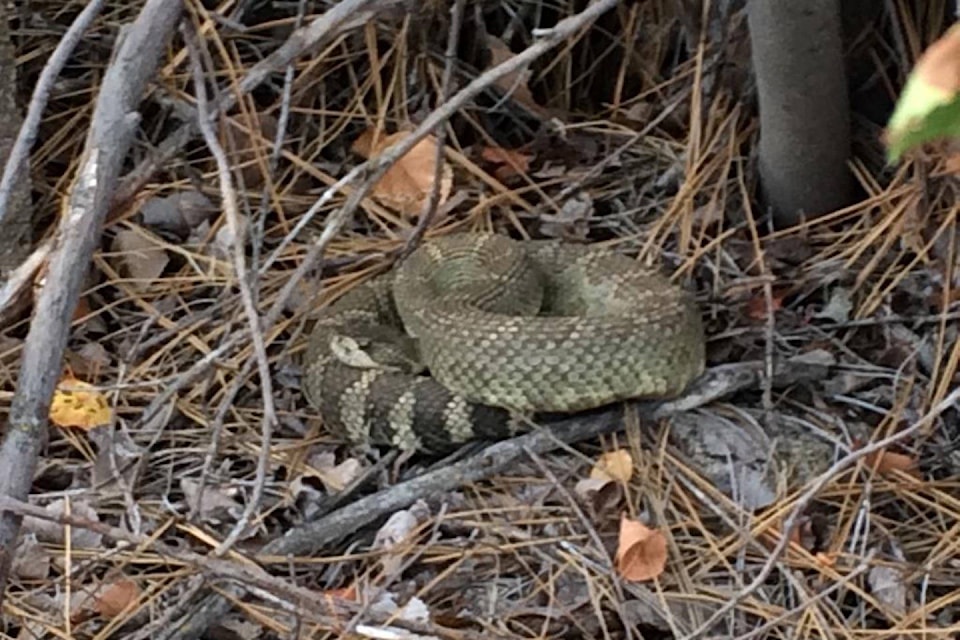| A beware of Rattlesnakes sign in the Chopaka area southeast of Keremeos where wildfire crews are working.(Photo courtesy of BC Wildfire) |
Claire Allen, information officer for BC Wildfire, said since crews arrived to fight the fire, firefighters have run into numerous large rattlesnakes.
“I’m from Kamloops, so it’s not uncommon for me to see snakes, but these snakes are quite large, they’re definitely healthier here,” she said.
This time of year, the preferred habitat of Western Rattlesnakes include tall grassy areas where they can easily feast on voles, mice, pocket gophers, ground nesting birds, and other vermin. That also enjoy rocky terrain where they can bask in the warmth of the Similkameen sun, but also find a quick hiding spot to keep them safe from predators.
Related: Update: Smokier skies expected near Snowy Mountain fire
| An aerial photo of the terrain near the Snowy Mountain fire near Keremeos during a burnoff Aug. 7, 2018.(Photo courtesy BC Wildfire) |
“We’re in one of their natural habitats. They’re seeing quite a few of them in long grasses,” she said.
Firefighters working the front lines always carry a stick or pulaski (wildfire tool combining an axe and a hoe). In this fire the tools offer an added benefit as a rattlesnake checker before they put their hands in a place they can’t see.
“When doing cold trailing firefighters are literally using their hands. They’re looking for lingering fire activity especially in areas where we have done burn offs. Basically they’re looking for any lingering fire activity so they’re checking rock dugouts, root systems and testing it to see if there is any remaining smouldering organic materials,” she said.
Related: Rattlesnakes in parts of South OK could be hissssss-tory
Allen wasn’t sure how many snakes crews had run into, but said it was a “regular” occurrence.
No one working the wildfire had been bitten by a rattlesnake at the time of this posting.
Other challenges faced by BC Wildfire crews working the Snowy Mountain fire include falling rocks.
“One of the other hazards we’re seeing as the fire is burning root system of trees on the steep slopes is that rocks are dislodging and they are sliding down the slopes,” she said.
The heat is offering up its own challenge with temperatures this week hovering around 40C at times. She noted because of aggressive fire behaviour, crews are working hard, “and breaks are few and far between.”
The Snowy Mountain fire was first discovered July 17 after a lightning storm went through the region. It has since grown to just over 12,000 hectares in size and is nearing the U.S. border.
To report a typo, email:
editor@keremeosreview.com.
@TaraBowieBC
editor@keremeosreview.com
Like us on Facebook and follow us on Twitter.
